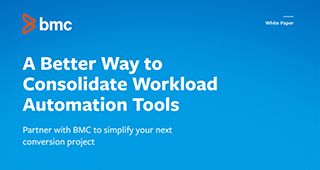One of the biggest business lessons of 2020 was learning that automation could actually step in to support remote processes and a remote workforce, and that any reluctance to use it was a mistake. This year, more companies are recognizing the benefits of emerging digital technologies such as artificial intelligence (AI) and machine learning (ML) that drive automation, but may be at a loss about where to start.
A recent Gartner report, Three Steps to Hyperautomation, provides guidance on how to get your organization on the right path to automating functions across the business. Leaning in to what automation has to offer is critical to becoming an Autonomous Digital Enterprise (ADE), a future state framework that envisions automated processes spanning every business function. Automation Everywhere is one of the ADE tech-enabled tenets, and hyperautomation is at its core.
Key Challenges
The report highlights some of the important challenges driving organizations toward hyperautomation, including:
- “COVID-19 has exposed numerous fragilities and vulnerabilities in many international supply chains, for both raw materials and finished goods, potentially disrupting production. It has also limited humans’ physical presence in offices, warehouses and factories.
- The rise of neonationalism and punitive tariff increases are creating significant uncertainties about the cost of imports and offshore manufacturing where labor has been less expensive.
- Most enterprises have not automated their operations as thoroughly as digital technology now enables. They still perform data-driven operations with a large staff, extensive real estate, decades-old legacy systems, and other costly infrastructure.”*
While hyperautomation processes can ramp up quickly, organizations should consider the long view. Gartner recommends beginning with a three-to five-year aspirational vision, then starting small with a proof-of-concept simulation, followed by a detailed, long-term plan and a solid business case that highlights the financial benefits.
Follow the steps
The process of moving toward hyperautomation is fairly straightforward, with three feasible steps that can help reduce labor and operating expenses and capital expenditures.
- “Step 1: Standardize processes and products and increase interoperability (5 percent potential savings)
- Step 2: Remotely manage or control operations (10 to 20 percent potential savings)
- Step 3: Make operations fully or semiautonomous (20 to 50 percent potential savings)”*
These steps come with some challenges, which the report highlights in detail, but the gains are worth the effort.
Conclusion
Companies that survived the tumult of 2020 likely did so through innovation, and innovation will continue to help organizations adapt and change to thrive amid constant disruption. Becoming an Autonomous Digital Enterprise and embracing hyperautomation are integral to that evolution. To learn more about the three steps to hyperautomation, and their challenges and benefits, including real-world business examples, view the report here.
* Gartner, Three Steps to Hyperautomation, Dale Kutnik, Kristian Steenstrup, 10 August 2020 ↩







